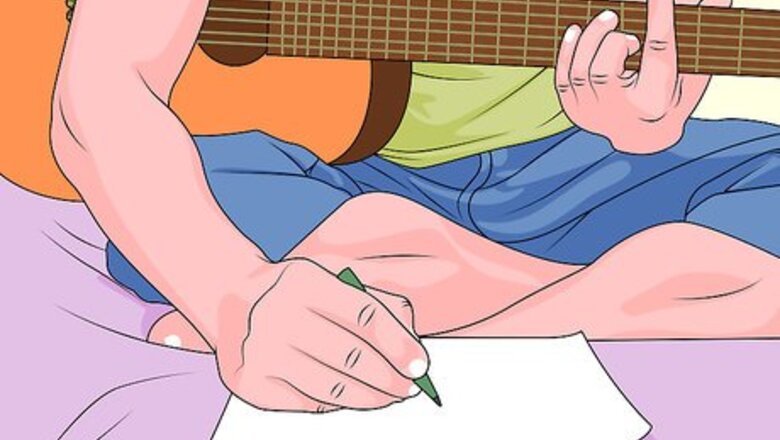
views
Preparing to Record
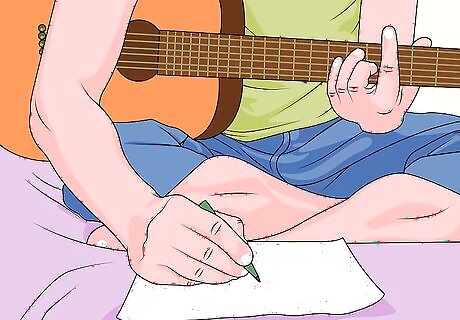
If you haven't already, write a song. Trying to record a song you haven't finished writing yet is like trying write a novel without any ideas about the plot or characters you're going to use — very tricky. Whether you're recording in your garage or at Abbey Road studios, you'll want to have your entire song figured out before you start to record. This saves you the time of having to re-record numerous takes as you figure out your song and, if you're using a professional studio, the money needed to pay for studio time. This means that your song's structure needs to be more or less decided-upon when you arrive at the studio, but it doesn't necessarily mean that you need to have every note pre-planned. Some artists, for instance, record their solos live in the studio. In some genres of music, like Jazz, entire sections of the song can be improvised — still, even in these cases, the musicians know when to begin and end each part of the song and how to stay in time with one another. For more information, see How to Write a Song.
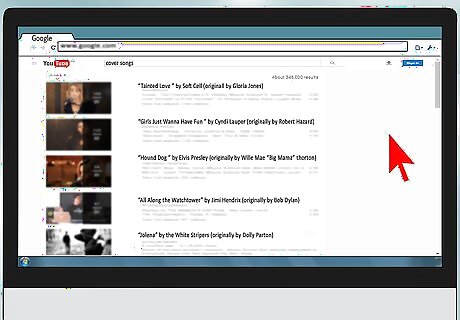
Alternatively, pick a song to cover. Not every song you record has to be an original. You can also record your own version of someone else's song (called a cover). There are no significant legal hurdles to recording a cover, though you are obligated to give the original songwriter credit if you sell your version commercially. Some of music's biggest hits have been covers (though this is not always well-known among fans of the songs). Below are just a few famous covers: "Tainted Love" by Soft Cell (originally by Gloria Jones) "Girls Just Wanna Have Fun" by Cyndi Lauper (originally by Robert Hazard) "Hound Dog" by Elvis Presley (originally by Willie Mae "Big Mama" Thornton) "All Along the Watchtower" by Jimi Hendrix (originally by Bob Dylan) "Jolene" by the White Stripes (originally by Dolly Parton) "I Think We're Alone Now" by Tiffany (originally by Tommy James and the Shondells)
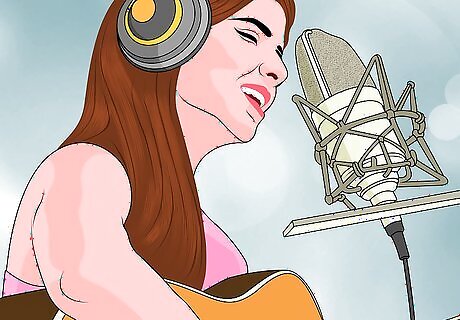
Practice, practice, practice. No matter when and where you're recording, it's always in your best interest to practice your song until you know it like the back of your (hopefully callused) hands. By the time you turn on the mics, you'll want to be able to reliably play through the entire song without making anything rather than insignificant, tiny errors. If you can't, you risk wasting lots of time playing your song over and over as you try for a perfect take. This is especially important if you're using a professional recording studio. While you can easily get away with making a few mistakes when you're recording in your garage, showing up to a recording studio unprepared can be embarrassing and costly. Studio time can be quite expensive (it's not rare for the services of a reasonably high quality studio to run at $100 per hour or more), so every time you make a mistake and need to start over, you're losing money. Plus, experienced sound engineers are present when you record in the studio — do you want to mess up in front of them over and over? Taylor Swift Taylor Swift, Singer & Businesswoman Be brave when making music. "Songs are my diaries; they always have been. You have to put your trust in everyone because putting down those real, personal details and thoughts that make a song authentic also opens you right up."

Have whatever equipment you need to sound "just right". Just like you'll want to be able to play through your song without mistakes before you begin recording, you'll also want to have all of the equipment and accessories that you need to make your music sound just right before you step into the studio. While many professional studios will have various amps, cables, effects pedals, and even instruments handy, there's no guarantee that they'll have exactly what you need to sound the way you want, so don't count on this. Instead, have all of your equipment with you to avoid the hassle of adjusting to a new setup. Obviously, if you're recording at home, all you'll be able to use is the equipment you have (or whatever you can borrow from a friend).
Recording Your Song
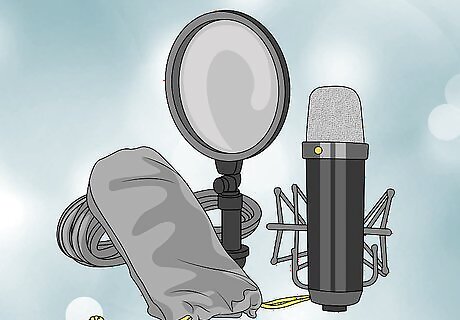
Get at least one good-quality computer microphone. When it comes to home recording, you're only really limited by the time you have at your disposal and the money you want to spend on equipment. Depending on the recording setup you want to have, the cost of home recording gear can range from about $100 to many thousands of dollars. At the very least, you'll need to buy at least one microphone of reasonable quality to record your voice and/or instruments. Don't rely on your computer's built-in mic — these are almost always too poor of quality to make a good recording with. Even among good-quality microphones, you have many, many options. The most affordable mics will cost about $100, while high-end items can retail for several thousand dollars. If you're trying to make electronic music without any vocals, you may be able to get away without having a microphone. However, in this case, you may need sampling equipment, extra software, and so on.
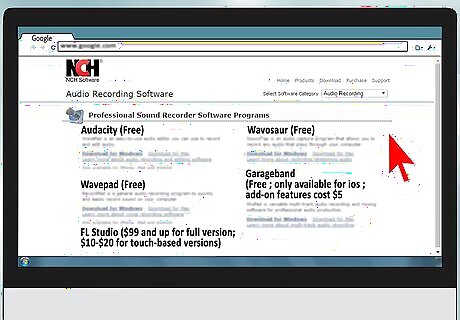
Download or buy recording software. To make a good recording at home, you'll need software on your computer that's up to the task. Here, you have a great deal of flexibility — professional recording software can easily cost $1,000, but a variety of cheap and free alternatives are perfectly serviceable for many amateur musicians' needs. Before you begin to record, be sure that your recording software is installed on your computer and is working properly. This means you'll probably want to test your microphone and any additional hardware to make sure that your software is picking up audio. Below are a few cheap and free audio recording programs you may want to consider: Audacity (free) Wavosaur (free) Wavepad (free) Garageband (free; only available for iOS; add-on features cost $5) FL Studio ($99 and up for full version; $10-$20 for touch-based versions)
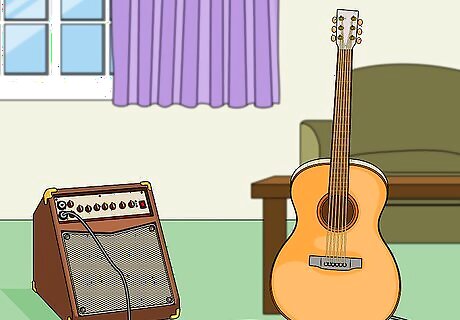
Lay down rhythm tracks. At a professional studio, the first thing you'll usually record is a performance track. All the musicians will play through the entire song together without stopping, even if minor mistakes occur. Then, after that, they'll play their individual tracks along to the audio of the performance. However, if you're recording in a home studio, unless you've sunk some serious cash into your setup, you probably don't have enough equipment to have every musician miked at once. Thus, you'll probably want to begin by recording the rhythm section. In a typical rock band setup, this is drum, bass, rhythm guitar, and any auxiliary percussion your song has. Record drums first, then auxiliary percussion, then bass, and finally rhythm guitar. The tracks you lay down for these instruments will be used to help keep the other instruments on beat as they play, so be sure that the rhythmic section is perfectly "locked in" to the beat of the song. To help the members of the rhythm section stay on beat, it may be helpful to use a metronome or click track. Most recording software will have the ability to use the latter built-in.
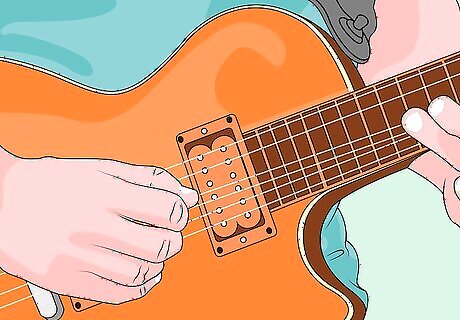
Lay down lead instruments. After you've laid down the rhythm section, it's time for you to add any lead instrumental lines. Lead guitar, synths, keyboards, and much more can be recorded at this point. As a general rule, if the instrument plays a melody or counter-melody line, you'll want to record it here. As you record each instrument, play over the tracks you've already recorded. This way, each instrument you record is easier to keep on beat than the last.
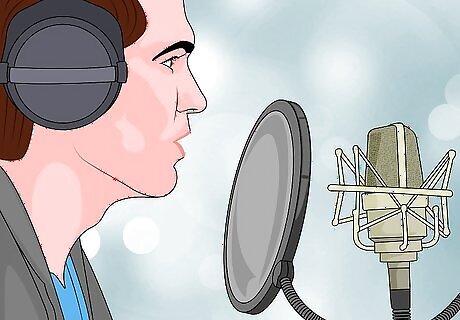
Lay down vocals. When you've laid down all of your instrumental tracks and you're satisfied with their quality, finally, record any vocal parts. If there is only one vocal part in your song, you may conceivably be able to do this in one take, but if your song has harmony lines, you'll need to record each separately. For singers, a good strategy is to carefully rest their voice the entire day of recording until it's time to sing. Try to avoid singing, shouting, or talking for long periods of time. Drink plenty of water. Some singers like to soothe their vocal chords with tea and honey. Avoid dairy, as this can produce a "phlegmy" feeling in the throat that can hamper good singing. EXPERT TIP A pop filter will help you avoid those distracting popping sounds in the vocal track, which will be difficult to edit out. Halle Payne Halle Payne Singer/Songwriter Halle Payne has been writing songs since the age of eight. She has written hundreds of songs for guitar and piano, some of which are recorded and available on her Soundcloud or Youtube channel. Most recently, Halle was a part of a 15-person collaboration in Stockholm, Sweden, called the Skål Sisters. Halle Payne Halle PayneSinger/Songwriter
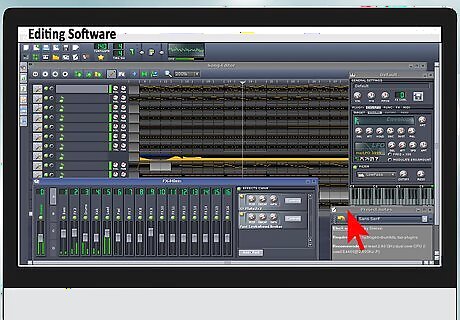
Edit your tracks. After you've recorded all of the tracks you'll need for your song, take a moment to celebrate — the nerve-wracking part is over. Next, you'll use your editing software to fine-tune your performances. Look and listen for minor inconsistencies in rhythm and tone and use the tools provided in your editing software to smooth out these rough spots. Every editing program will be somewhat different, but nearly all will allow you to adjust the volume and left/right alignment of all tracks, delete and copy content, and apply special effects. Use your recording software's tools to give your song the level of polish you're looking for. Save often as you edit. Make a duplicate save every time you make a major change. Losing work and having to re-record at this point is a major pain and a huge waste of valuable time.
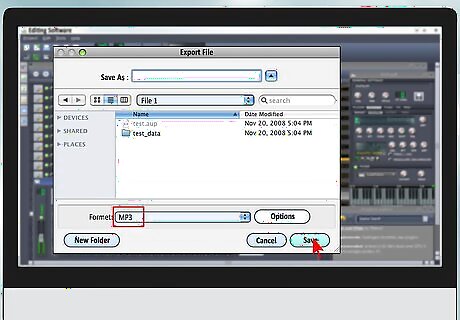
Publish it! Finally, you've finished — your parts are all recorded and you've edited your song so that it's as perfect as it will ever be. To complete the process, save your file in a common audio format like .mp3, .wav., .flac, .ogg using the recording software's "export" or "publish" function (usually under the "File" or equivalent tab in the menu bar). When your file is saved in its new format, you can use it as you please. You may, for instance, want to email it to a friend, burn it to a CD, or upload it to an online streaming service.

Contact a professional recording studio. Unlike recording at home, recording in the studio isn't the sort of thing you can approach casually when you have a few hours free on a Friday. Studios are busy, high-cost businesses, so, for your benefit and the studio's, you'll need to schedule a block of time during which you'll record your song. The amount of time you'll need depends on how complex your song is. Simple songs, like ones involving only an acoustic guitar and a vocal melody, can conceivably be recorded within a few hours, while songs involving a whole band can easily take 10 to 15 hours. As an alternative to expensive commercial studios, try contacting a local art school or a university's art department. Some schools will allow musicians to record their songs for free so that students studying music production can have a chance to practice their skills on the school's professional-quality equipment.
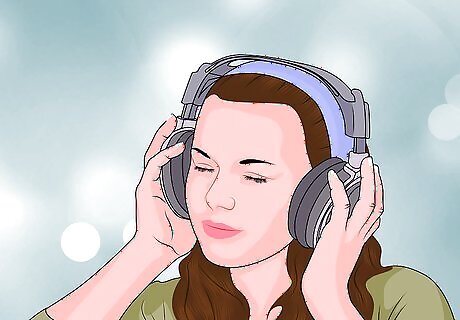
Know your song perfectly by the time you arrive. One of the biggest differences between recording at home and recording in the studio is that, for the latter, time (both yours and the studio's) is always a serious concern. The longer you take in the studio, the more you'll spend, and bills can rack up quite fast. At a small but professional-quality studio, it can take anywhere from about a hundred dollars to a few thousand dollars to complete the recording process for a single song. Because these base costs will only increase if you have to spend extra time recording, you'll want to have your song completely mastered by the time you arrive at the studio.

Lay down a performance take first. Generally, once the studio engineer has finished setting up her equipment, the fist thing you'll do is play through the entire song once without stopping. This "performance track" should include all of the musicians present — you want it to be as close to a "real" live performance as possible. Though you'll want to do your best, it's not the end of the world if you make tiny mistakes at this point, as none of the tracks from this performance will typically make it into the finished product unless they're exceptionally good.
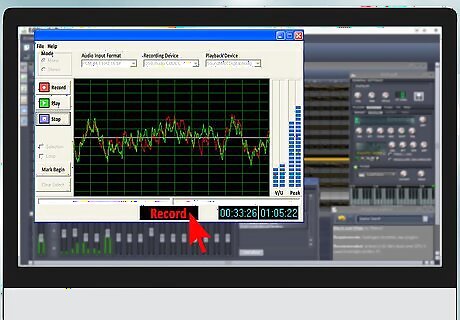
Next, record your tracks in the same order as at home. After you (and any other musicians present) record your performance take, you'll play and sing your individual parts over it as you listen to it (and, sometimes, a click track) through a set of headphones. Having a performance that's basically "correct" to play over generally makes the process of recording much quicker and easier, though it can sometimes take a little time to find a volume level that allows you to hear yourself over the performance take as you play. Record your tracks in roughly the same order as you would at home: first drums, then any auxiliary percussion, then bass, then rhythm guitar, then lead guitar and any other lead instruments, and finally vocals. Ideally, you'll want to record each track within a few takes, rather than having to waste time on many takes, so, as noted above, try to know your song very well before recording. Some jitters at the outset of the recording process can be unavoidable, especially if it's your first time, so some engineers will recommend you participate in some short ice breakers or relaxing activities before beginning.
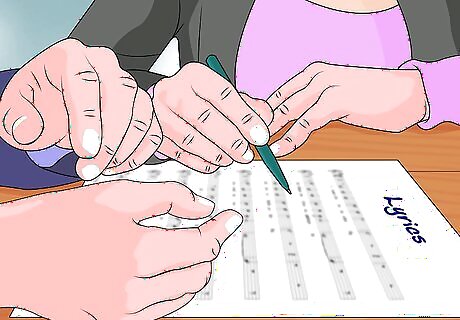
Make editing and production decisions with your producer. As you record (and after), your engineer may share ideas about how certain instruments or sections should sound. She may, for instance, recommend adding a certain after-effect, like reverb, to your vocals to give them the quality of being performed in a large room with a slight echo. Or, she may have suggestions about the studio banter you want to bookend your song with — maybe it's too long or distracting. In any case, it's up to you to communicate with your engineer about the way you'd like your recording to sound and to accept or reject any suggestions she makes. It's your recording, but the engineer does this for a living, so be sure to at least consider her advice. Engineers typically won't comment on the structure or composition of your song, just its sound quality, so there's no reason to be insulted if an engineer wants to try something a little different than you expected. This being said, keep in mind that time spent experimenting with different sound palettes is time you can't get back, so try to keep any experimentation brief.
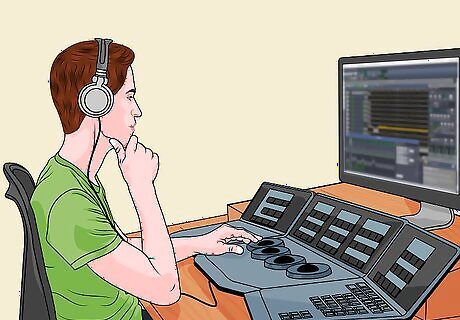
Send your tracks to a mastering engineer. When recording is done, you can leave and you may be given an "un-mastered" copy of your recording, but the work isn't over yet. After this point, the recording typically goes to a mastering engineer, who makes precise adjustments to the recording to ensure that it sounds as good as possible in a process called "mastering". Mastering involves adjusting the relative volumes of the tracks in the recording, ensuring internal consistency by adjusting the recording's EQ and gain, using compression to give the recording a consistent volume, and much more. Skipping the mastering stage can result in a recording that sounds "thin" or imbalanced, so this is recommended for almost everyone who records in a professional setting. Mastering carries its own cost in addition to the basic recording process. This is often at least $100-150 per song and can be much more. This is especially important if you intend your track to be heard on the radio, as all major commercial releases are mastered.
Taking Your Next Steps
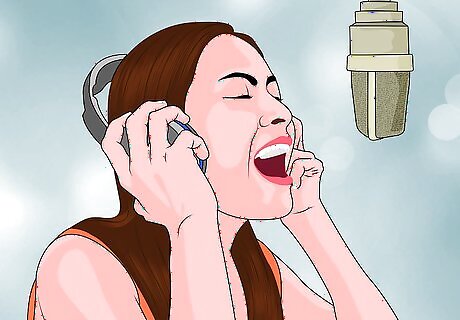
Record more songs to form an album or EP. If you have plenty of material to record and the time and resources to do it, consider recording an album or EP. An album is the standard collection of 8-15 songs or so that represents a major release for a musician, while an EP (short for "Extended Play") is a shorter collection of songs that is usually only 3-5 tracks long. With an album or EP under your belt, you can start treating yourself as a serious artist and even make money by selling your work!
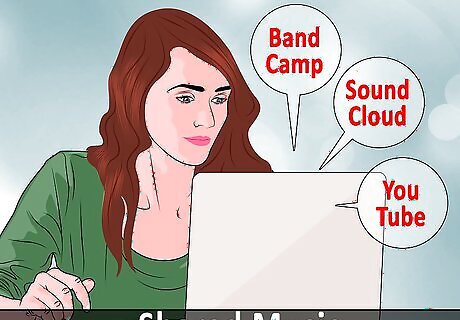
Share your music online. If you've just recorded some hot new tracks, take advantage of modern internet technology and share them with your fans! Streaming services like Youtube, Soundcloud, and Bandcamp allow you to host and share your songs for very cheap or free after registering an account, making this an ideal option for those looking to reach the largest audience possible on a budget. To quickly promote the song or album to all of your friends and family members, you may also want to try posting a link to your album on your social media (Facebook, etc.) profile.
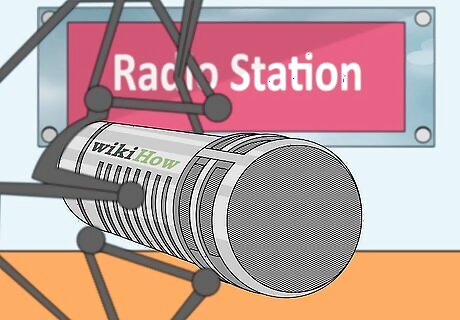
Reach out to the music and entertainment industries. If, after listening to your new recording, you're convinced that you have a future hit on your hands, try contacting someone with the power to get your music on the radio and in stores. For instance, you may want to try arranging a meeting with the staff at a small independent record label or sending your music to live venues in the local area for a shot at a paying gig. Regardless of what you do, the best way to get noticed in the industry is to stay active — play shows, release new music, and take a decisive role in your musical career. In addition, some radio stations (especially college stations) accept music submissions from independent artists.




















Comments
0 comment